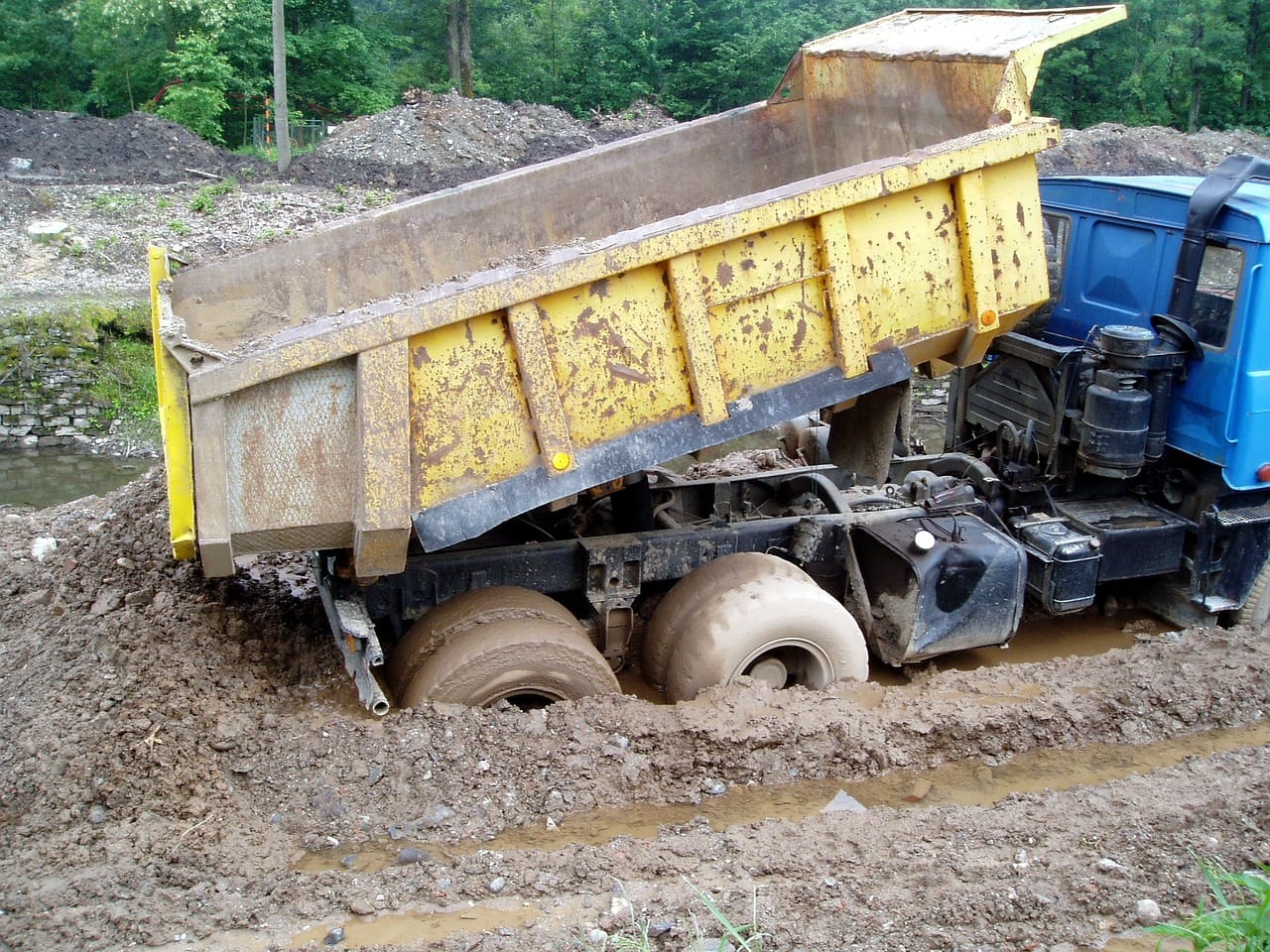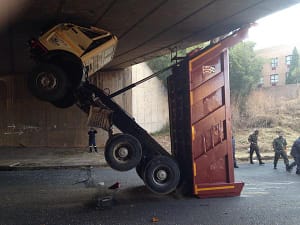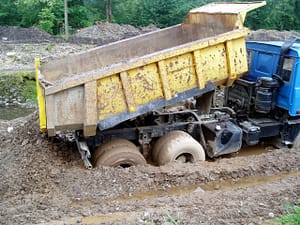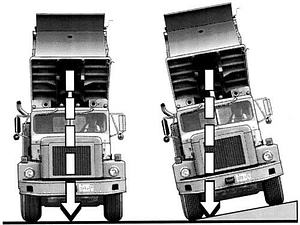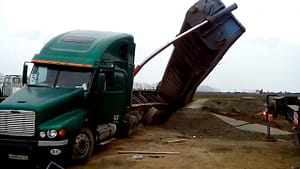
Overview
Tipper trucks play a vital role in industrial and mining operations, serving as indispensable assets for the transportation of bulk loose materials such as soil, stone, and animal feed. However, these robust vehicles are susceptible to various risks inherent to their hazardous working environments. These risks can arise from human error or adverse weather conditions, including rain and strong winds. Notably, tipper truck accidents predominantly occur during the off-loading process, particularly when the tipping slope exceeds a 5-degree angle.
Tipper truck accidents not only incur property damage but also pose significant dangers, occasionally resulting in fatalities for drivers and individuals in the vicinity. Undoubtedly, these accidents entail substantial losses and warrant careful attention to ensure the safety and well-being of all involved parties.
Typical tipper truck accidents
In certain situations, it has been observed that tipper trucks might encounter collisions with overhanging structures such as bridges and power lines due to the inadvertent omission of lowering the bin after tipping. Other contributing factors include unstable or wet ground conditions, tipping on steep slopes, offloading in the presence of strong cross-winds, and improper loading of the bin.
The call
Upon receiving a notification from a longtime acquaintance who had been employed as a subcontractor for a gold mine in the Free State, I discovered that he too was encountering a comparable issue with their tipper trucks. This news both excited and daunted me, for I recognized the importance of taking on this challenge head-on. The client’s proposition not only provided me with a promising opportunity to resolve a predicament that was plaguing numerous industries, but it also promised to be a lucrative endeavor and a significant boost to my professional reputation.

Actual footage from client
What the client wants
Following several detailed discussions with the client, it was determined that the development of a robust monitoring system for truck offloading operations was necessary. The primary objective entailed ensuring the safety of the offloading process by implementing measures to detect and prevent potential risks. To achieve this, the system needed to incorporate various components such as real-time monitoring of the truck’s status, the ability to halt offloading if deemed precarious, and the implementation of alarms, voice prompts, and cabin lights to alert the driver accordingly.
Additionally, comprehensive data collection on truck status and driver response during each tipping operation was deemed essential. Furthermore, it was required that the system include a mapping functionality to visualize and identify areas within the mining site where truck operations may pose a risk, providing GPS coordinates for reference.
Getting to work
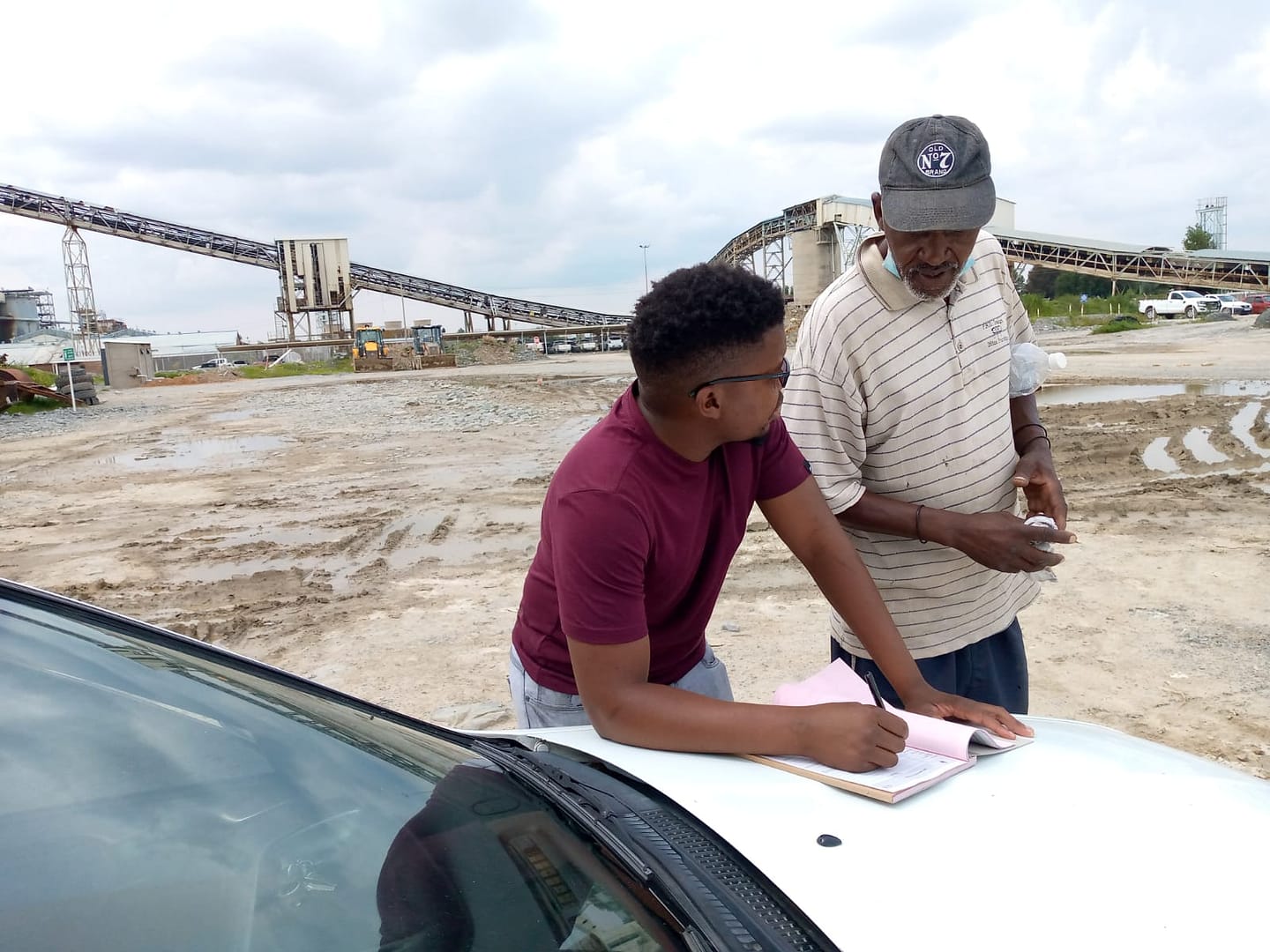
Early morning briefing session at mining site
With an eagerness to tackle a new challenge in the realm of heavy duty vehicles, I knew that finding the right expertise would be the key to success. Fortunately, luck was on my side as I discovered that my neighbor and family friend happened to be a retired truck mechanic with over three decades of invaluable experience. Enthusiastically bringing him on board, we embarked on our journey to build an exceptional system.
The search

During the product development process, it is imperative to thoroughly comprehend the problem at hand and extensively examine existing solutions that have been applied to similar problems in the past. This initial phase should not be rushed, as it serves to not only enhance your understanding of the problem itself, but also aids in estimating the duration and cost of the project.
After dedicating considerable time to meticulous research and analysis, I successfully grasped the extent of the problem and devised an appropriate solution. It became evident that the development of a digital inclinometer, encompassing additional features such as GPS mapping, driver response monitoring, and robust alert systems, would be required.
At this point, it is imperative to have a comprehensive understanding of the estimated project cost, timeline, hardware component sourcing, and other relevant particulars. Ensuring meticulous attention to these details is pivotal, making certain the project remains feasible in terms of financial implications.
Design challenges
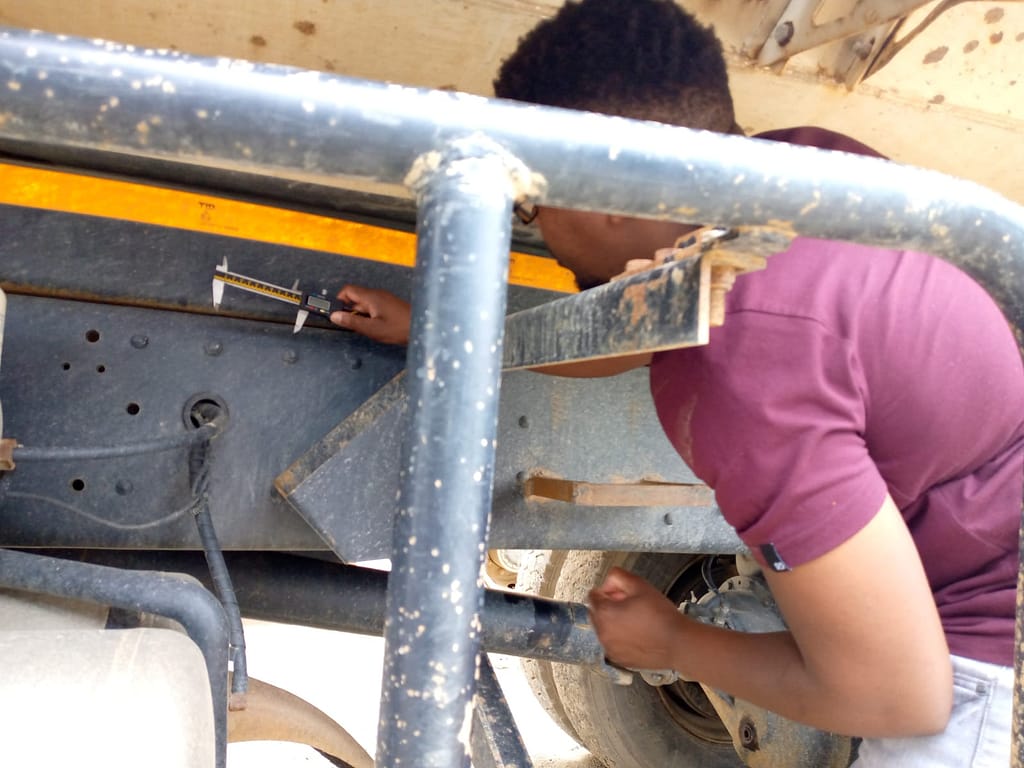
Upon conducting thorough site visits and comprehensive inspections on the trucks, it became evident that one of the most significant hurdles we would encounter was procuring an enclosure capable of withstanding the demanding working environments. Given the requirement for wireless communication in certain subsystems, employing metallic enclosures was ruled out as a viable option.
Some other challenges that we had to consider included:
- Figuring out how to route the power to all circuits since we would have to attach three accelerometers on the chasis, bin, and cabin.
- Choosing a suitable combination of wireless communication protocols. The mine has poor internet connectivity.
- Incorporating a hassle free feature that would allow the drivers to calibrate the systems.
- Securing access to the sensor data
- Accessing the sensor data remotely
Developing the product

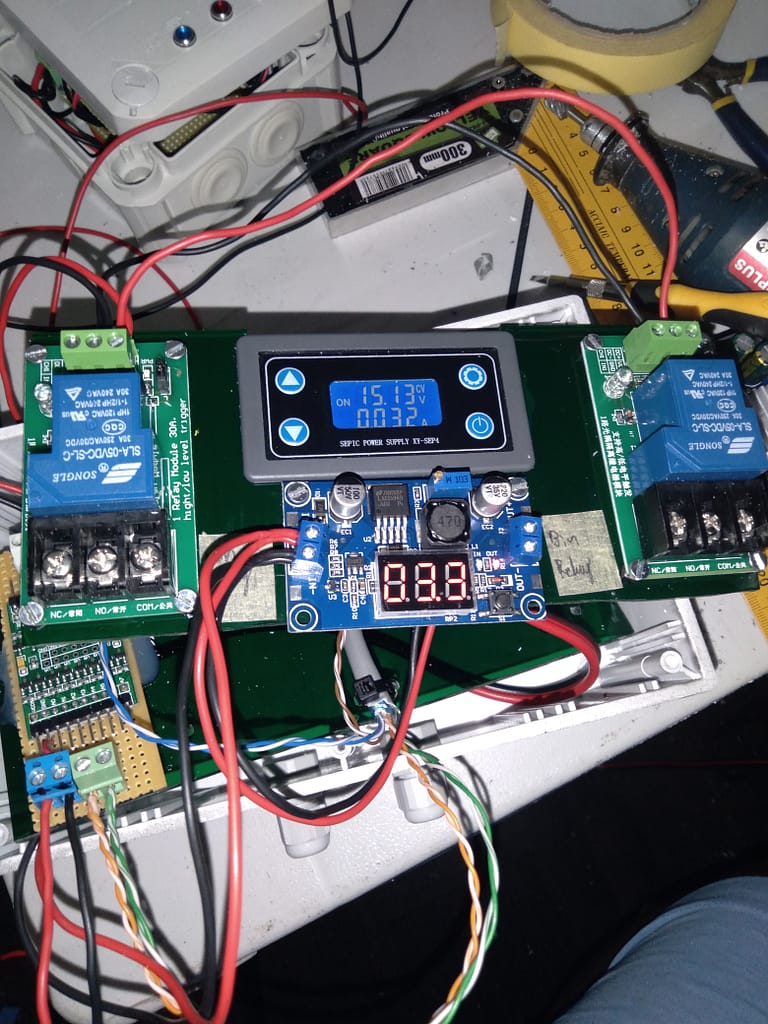
After much time spent on research into the topic. I was finally ready to build the system. It would take me about four weeks working on the design,sourcing components, writing code, and assembly of the product. There were multiple components to consider, some of which were new to me. Much of the components that are needed for early development can be picked off the shelf.
I Knew that the power supply would have to be of quality. The electronics would have to work with the power supply from the 24V batteries, and we could not risk having our circuits frying or interfering with other electronics and systems that were already on the truck.
Testing the design
Testing in the real environment is very costly and often not possible since it requires your particular client to halt production. When it comes to testing, you want to create a test environment that closely simulates the actual working environment.
In my case, I leveraged the power of open-source development and downloaded a model of a spherical manipulator on Thingiverse.com that I later 3D printed. This setup would allow me to simulate the different angles and visualize the data, although it proved to be quite challenging. I would later fine-tune it, and now I had a simulator for testing my design.
I would later test my other subsystems, including the power supply and switching circuit, and the weatherproof enclosure.
Becoming a field agent






Now that my system had been completed and tested in my lab, it was time to leave my desk and face the real world. Having my laptop connected to a dump truck kind of felt like I was bringing a knife to a gunfight. I was finally ready to install the systems on a real truck, and that was quite nerve-wracking. With the help and support of my newly recruited team, I was able to gather my confidence and face the task.
Once on-site, we put on our PPE and found ourselves drilling and cranking at the chassis while simultaneously updating code in a dusty and dry mining environment, and after a long day, we finally managed to install the system as part of our first pilot test.
Site revisit



Upon revisiting the mining site after many delays due to production deadlines, we finally got a chance to check up on our work, and at first glance, it was clear that the circuits had been through a lot.
I was not surprised to find the circuits covered in mud despite having used an enclosure with a good IP rating and a metal cover. Luckily, we had the master circuit installed in the driver’s cabin, and it had all the data that we needed.
The devil hates the finisher

Despite the challenges faced, our first pilot test was a success. We would put together a report of progress for the client, and would start further discussions of out next steps towards further development, and our client was content with our work, and had given the go ahead to develop four more systems to install on multiple trucks. Again this was good news for us.
Just when we were eagerly anticipating some good news, bam! The mine workers burst into a full-blown strike, bringing the mining operations to a screeching halt. Our client, like a frugal squirrel, decided to tighten their purse strings, and sadly, our project got caught in the epic cost-cutting frenzy. All I could think was, “Well, there goes my golden ticket to winning the lottery!” But hey, at least we’ll have a hilarious story to tell at cocktail parties, right?
Lessons learned
Developing new products is not a straightforward process. The threats are just as important as the opportunity itself. It’s not always possible to foresee all possible threats, but some time and attention is needed to analyze possible challenges that could get in the way of progress. This will help you be more prepared and even help you adjust the pricing of your services.
There’s still an ongoing relationship with the client, and plans are underway to continue the project in the future. I hope that this gives an important and valuable insight into what it takes to develop new products, and hopefully, you can be better prepared for your next mission.
Tips for developing and managing your next hardware project
- Take some time to research the problem, and consider all possible challenges including those not related to design.
- Set milestones and goals using a Gantt Chart. This is a roadmap that will help you stay on target, and help you stay organized and focused.
- Data is everything, make sure that your hardware is capable of collecting data and if possible it should have a web interface where you can visualize and collect data remotely, this is both useful to you and the client.
- The worst thing that can happen is running out of cash during the development phases. ensure that you have charged correctly for the service. Consider even the little miscellaneous costs such as PPE, food, travel,…etc. It’s not just about the cost of the hardware.
- Traveling to site is costly, ensure that your firmware can be monitored and updated remotely.
- Speed is crucial, the longer it takes to develop the product, the more money you will loose. Start by using components that you can buy off the shelves. Do not re-invent the wheel.
- Every little gap in your knowledge about the problem or the intended solution is gonna cost you time. Take into consideration the time it will take you to learn new skills during the development period, and add this to the project duration.
- Let everyone know that you’re working…! .Don’t get distracted by chores, people, and your surroundings.
- Get enough rest, and have a beer on weekends…!
